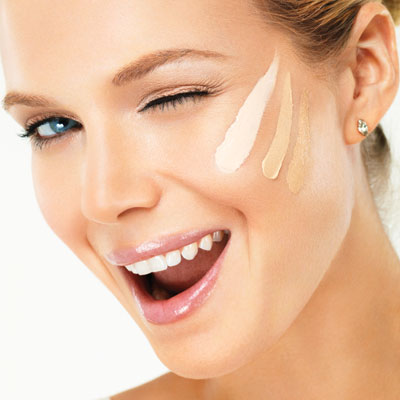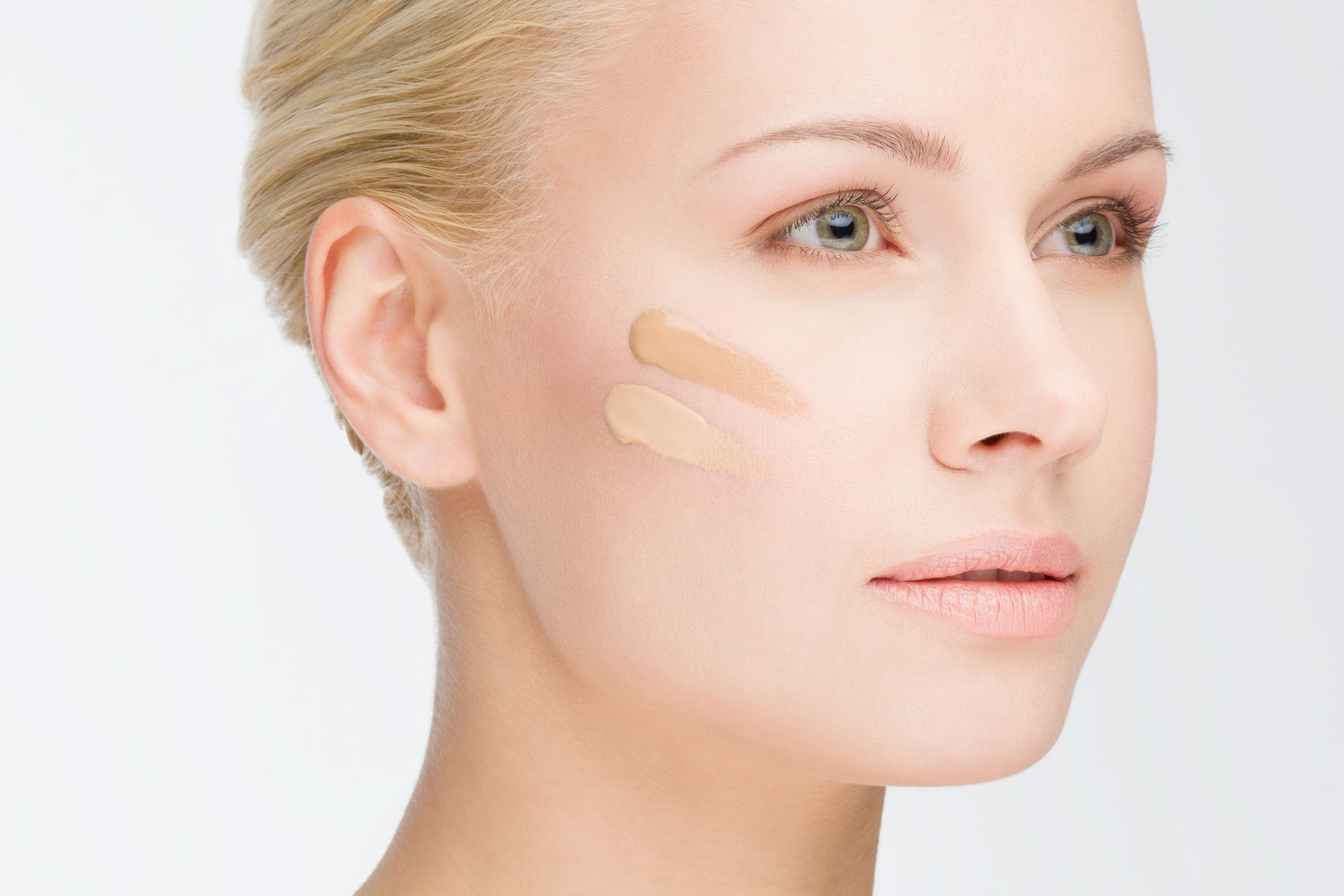How important is it to know what your skin type is? Super important!
Regardless if you’re a skincare junkie or just starting out in dabbling with makeup and skincare, it’s absolutely necessary to know what products work well on your skin. Just like how you have different preferences to the types of food you eat or the clothes you wear, your skin is just as unique and has different needs to maintain a beautiful and healthy appearance.
But the problem is that most of us don’t necessarily have the resources (or money cause, let’s be honest here) to get professional consultations on what our skin type is. Of course, it’s definitely better to get professionally evaluated for accurate results (and we highly recommend you do!), but if you’re like us who can’t afford one trip to the dermatologists, there are some cost-friendly alternatives that can help you get a sense of what skin type you may have.
That’s why today’s article is going to feature everything about the different skin types out there, along with two simple ways you can do at home to help you narrow down your skin type.
Let’s Talk About Skin
The human body is a mysterious thing. Not only does our skin help to protect your organs and keeps your bodily functions intact, but it also works to repel the outside factors that could potentially harm your body. Another great thing about our skin is its ability to auto-adjust to its surroundings. So factors like the environment, the climate, our genetics, and even the products that we use all affect the skin in various ways.
How Many Skin Types Are There?
There’s actually as many skin types as there are people in this world because we’re all unique and have many differences that separate us from our peers.But for sanity’s sake, we narrowed the skin type classifications to 5 1/2 different categories: normal, oily, dry, combination, sensitive, and mature skin types.
Here’s the truth: we generally don’t fall into one specific category, because as we grow older and change, our skin also experiences changes as well. Sometimes we have more than one skin type and in other times our skin seems to go through a brief state of confusion and shift types.
So it’s possible for us to be oily-combination, dry-combination, super oily, or even super dry skin types.
How Do You Get Your Skin Type?
Your skin type is genetic, which means it’s inherited from your parents which can present itself as a blessing or a curse. For some people, this could mean that it’s possible to inherit skin conditions like eczema, acne, skin cancer, rosacea, or psoriasis along the way as well.But regardless of whether we develop skin condition or not, one thing is common for all our skin types: oil.The only difference about oil is how much our face actually produces it, and the varying levels make up the different skin types we know today. Before discussing about how you can find your skin type, let’s break down each skin type.

Dry Skin
Dry skin (A.K.A Xerosis Cutis) is a skin type that produces the least amount of sebum from your sebaceous glands compared to the other skin types. For all you dry skin peeps, this means that the amount of oil you produce to act as the skin’s barrier and lubricator is less prominent and can lead to flaky skin and micro cracks beneath the skin’s surface.
To compensate for the lack of oils, you’re going to need external products like thick and heavy moisturizers to fill in those gaps and make sure your skin is well protected and nourished.But wait! If you thought that’s all to dry skin, you definitely need to know that there’s three different types!
Mildly Dry Skin Type
This skin type is described as feeling some tightness and seeing overall dullness, due to the lack of elasticity on your skin. Many dry skin types may fall under this category and require a nourishing moisturizer to help restore the skin’s moisture. Very Dry Skin TypeThis skin type is more prone to redness, dryness, and overall skin sensitivity. For parts of the skin that’s more dry, the areas may appear darker in color and might be itchy.
Extremely Dry Skin Type
This skin type tips the severity rating for dry skin because it can be characterized as prolonged itching and redness, and the intensifying of scaly and flaking skin. Sometimes you might see rough patches forming on your skin as well brendaclarksellshomes. If you find that you have extremely dry skin, definitely consult a medical professional for solutions.
Oily Skin
On the other side of the spectrum, we have oily skin (A.K.A. Seborrhea), which is both a blessing and a curse. First things first, oily skin types have overactive sebaceous glands that produce sebum and fill up the pores, which can tend lead to inflammation and acne! But it’s not all bad to have oily skin because the sebum helps retain the skin’s moisture and actively works to prevent outside environmental factors from moving in! People with oily skin would also see that because of the abundant amount of oils, their skin displays signs of aging at a much later stage than their dry skin peers.
So hooray for youthful looking (but greasy) skin!
Combination Skin
If you find that you have both oily and dry areas in certain places of your face, it’s more likely the case that you’re a combination skin type. Combination skin types usually are usually characterized as an oily T-zone and dry cheeks, but it can also manifest in other ways (dry T-zone and oily cheeks, etc.) Some other combination skin types include dry-combo, oily-combo, and sensitive-combo skin.
Regardless of which kind of combo skin you are, it’s super important to use the right products to target those specific areas of your face. Our beloved host Felicia loves to treat herself to the occasional combo masking, which includes a bentonite clay or mud mask on her oily T-zone, and a nourishing and hydrating mask for the dry areas on her face (even though this process makes her look like a warrior with an epic beard but hey, we’re not judging here). Some products in the market are also marketed as “balancing” to help moisturize dry areas and control oils on oily areas of the face altogether, so there’s a lot of options for helping you control your skin.
Sensitive Skin
There’s a lot of debate on whether sensitive skin should be considered a type, but in our books, it is…to an extent. Sensitive skin types aren’t necessarily a type like oily, dry, and combination, per se, but it resembles an “add-on” to the other skin types. But in a nutshell, sensitive skin types are mostly caused by a combination of external and internal factors, which include changes in temperature, certain ingredients present in our skincare or makeup products, and the sun. Additionally, internal factors like hormonal fluctuations, stress, lack of sleep, health problems, poor diet, as well as skin conditions like eczema, rosacea, rashes, itchy bumps, flushing, etc. can also affect the degree of sensitivity for our skin.
Normal Skin
Normal skin types can also become dry or oily, but unlike the dry and oily counterparts, they usually resolve itself after a short period of time. Another fact on normal skin types is that their skin won’t appear shiny due to excess oils or experience flakiness as often as the other skin types. They can go about their day with any neutral, simple or lightweight moisturizer, which is great!
This skin type also has very fine and near invisible pores, good blood circulation, a uniform skin tone with little to no blemishes, and a soft and smooth texture.
Mature Skin
Aging is a natural process that’s inevitable and a process we all go through, but with the right tools we can help it slow down to the best we can. As we grow older, our skin starts to slow down on the production of collagen and elastin in our skin, which then can contribute to fine lines and wrinkles, thinner skin, and less sebum production.
For this skin type, you’re going to want to put in a little more TLC to help your skin, such as using Retinols and Retin-A’s, collagen boosters, and sunscreen for that SPF protection.
How Can I Tell My Skin Type?
Method 1: Blot Paper Test
What you’ll need:
- A mirror
- (or a ply of tissue, tissue paper, Starbucks napkins, or parchment paper)
What to do:
- Wash your face with a cleanser & pat dry
- Go about your day for two hours without putting on any additional skincare products
- After two hours, stand in front of your mirror with blotting papers on hand
- Place a blotting paper on the following areas of your face: T-zone, under eyes, cheeks, chin
- Take note of where the blotting paper sticks to your face or falls off
Results:
Oily skin: All blotting papers are drenched in oil.
Dry skin: You’ll notice that some blotting papers fall off while some has specks of oil.
Combo skin: The blotting papers are sticking to T-zone area and falling off for other areas (can be vice versa too).
Sensitive skin: Your skin starts feeling tight, itchy or red during the two hour wait.
Normal skin: The blotting papers are sticking to the skin but fall off after a while. There are also uniform specks of oil present on all blotting papers.
Method 2: Look and Pinch
What you’ll need:
A mirror
What to do:
In a well lit area, look carefully at your skin using the mirror. Observe the cheeks, T-zone, chin, as well as the jawline.
Gently pinch your cheek between your index and thumb finger.
Results:
Oily skin: Pores are visible and the skin looks somewhat shiny but feels taut and firm.
Dry skin: The skin feels dry and either has dry flakes or a “crumpled paper look” once pinched.
Combo skin: Pores are visible and skin looks somewhat shiny, especially in the T-zone. Other areas such as the cheeks, chin, jawline are more matte and dry to the touch. Combo skin also feels taut and firm to the touch.
Sensitive skin: The skin appears red, itchy, and somewhat irritated. Some sensitive skin types might see rashes, eczema and rough patches as well.
Normal skin: Pores aren’t visible and the skin feels taut and firm to the touch.



